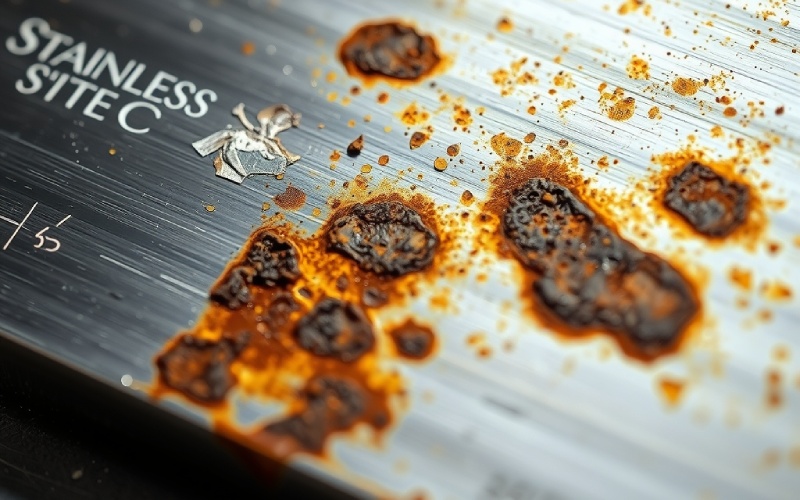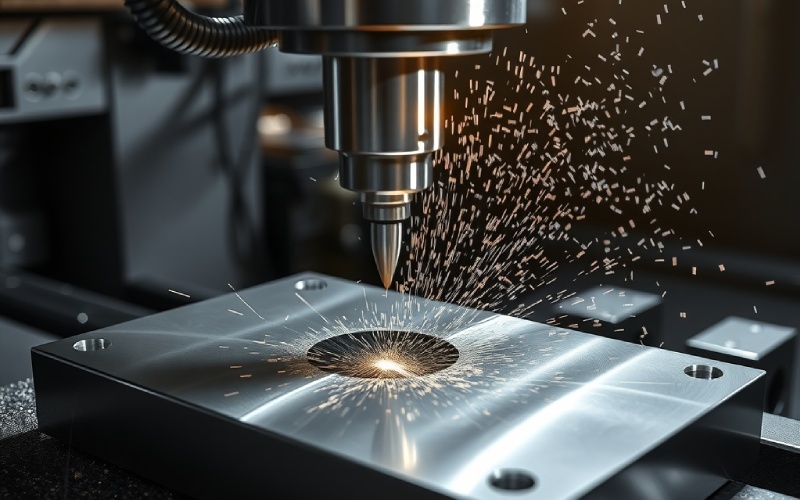이스타르의 경험과 노하우를 바탕으로 여러분의 프로젝트를 시작할 수 있도록 도와드리겠습니다!
디자인 파일과 제작 요구 사항을 업로드하시면 30분 이내에 답변해 드리겠습니다!

I’ve worked with metals for many years. One thing I learned is that not all stainless steel is made the same. You might see numbers like 18-8, 304, and 316. You may wonder what they mean. In this post, I will explain the difference between 18-8, 304, and 316 stainless steel. I will also help you figure out which one is the right one for your job. This will help you save both time and money.
Have you ever heard of 18-8 stainless steel? It is a very popular kind of stainless steel. The name “18-8” tells you what it is made of. It has 18% chromium and 8% nickel. This mix of metals helps it fight off rust well. This means it does not get rusty easily. This kind of stainless steel is also strong. You can shape it without it breaking.
You can find 18-8 stainless steel in many different places. It is often used for making things in the kitchen, like sinks and pans. You will also see it used in places that make food or in hospitals. This is because it is a safe and long-lasting stainless steel material. It is a good pick for lots of everyday items because it does not cost too much. But, it is not the best choice for every single job, especially if it will be near salt water.
People often ask me if 304 stainless steel is the same as 18-8 stainless steel. The easy answer is that they are very much alike. Really, 304 stainless steel is just one kind of 18-8 stainless steel. They both have about 18% chromium and 8% nickel. That is why people often group them together. The name “18-8” is a general name. On the other hand, “304” is a very specific type.
The biggest difference is that 304 stainless steel must pass certain tests. This means you know just what you are getting when you buy 304 steel. It is a very popular kind of stainless steel. This is because it works well and costs a fair price. You can find this type of stainless steel in all sorts of things, from kitchen machines to parts for cars. Making things out of this steel is also pretty easy. That is why companies that build things like to use it.
So, what is the story with 316 stainless steel? Here is where you see a big difference. The biggest thing that is different about 316 stainless steel is that it has a metal called molybdenum added to it. This may not sound like a big deal. But it makes a huge difference in how well it can stop rust. Molybdenum helps the steel fight off rust. It is especially good at stopping rust from salt and other strong chemicals.
This extra power to stop rust makes 316 stainless steel perfect for hard jobs. People often call it “marine grade” stainless steel. This is because it does a great job in places with salt water. If you need a screw or a part for a boat, or for anything near the sea, 316 stainless is your best choice. This better ability to stop rust also makes it a great pick for tools in hospitals and for machines that work with chemicals.
When I talk about stainless steel, how well it stops rust is a really big deal. This is the main thing that makes stainless steel so special. The chromium inside the steel makes a thin, safe layer. This layer stops rust from forming. Both 18-8 and 304 stainless steel are good at stopping rust in most places. They are great for kitchens and for most other uses.
But, when you have salt or certain chemicals around, you need something that is stronger. This is where 316 stainless steel does a great job. The molybdenum in 316 stainless gives it a much better ability to stop rust. It is especially good against things like salt, which are also called chlorides. This means it can deal with salt water and other things that cause rust much better than 304 stainless steel can. So, for any job that will be in a tough place, 316 stainless steel is the obvious choice because it will last longer.

Picking the right kind of stainless steel is super important. Each type is best for certain jobs. Here is a quick guide to see where each type of stainless steel is used:
| Stainless Steel Type | Common Places to Use It |
|---|---|
| 18-8 / 304 Stainless Steel | Kitchen sinks, pans, machines for making food, tools for restaurants, and parts for trucks and cars. |
| 316 Stainless Steel | Parts for boats, machines that use chemicals, tools for doctors, and parts for hot machines like heat exchangers and furnaces. |
As you can tell, 18-8 and 304 stainless are great for everyday things. They are good where you need to keep things clean and free of rust. But for tougher jobs, like near the ocean or around chemicals, 316-grade stainless steel is the safer and longer-lasting pick.
A question I get a lot is about making these kinds of stainless steel harder. It is important for you to know that 18-8, 304, and 316 are all austenitic stainless steels. This is a fancy way of saying they are built in a special way. One of the main things to know about this type of steel is that you cannot use heat to make it harder.
Instead, you can make these kinds of steel stronger by using a method called cold working. This just means you bend or shape the steel when it is not hot. Doing this makes the steel stronger when you pull on it. So, you cannot use a hot furnace to make them harder. But you can still make them very strong for all sorts of jobs. This way of making steel harder is often used to make strong screws and bolts.
When you build something, you want it to last for a long time. That is why being strong and long-lasting is important. Both 304 and 316 stainless steel are very strong materials. They are strong enough that you can pull on them hard without them breaking. The 316 stainless steel is usually a little bit stronger than the 304 stainless.
But the real story about how long they last comes back to stopping rust. A steel part can be very strong. But if it gets rusty, it will break. In a regular place, both 304 and 316 steel will last for a very long time. But in a tough spot with salt or chemicals, the better rust-stopping power of 316 stainless steel makes it the one that will last longer. This is a big difference to keep in mind when you are picking your stainless steel.

Besides stopping rust and being strong, there are a few other things to consider. One thing is whether it is magnetic. Usually, both 18-8 and 304 stainless steel are not magnetic. But, after they are bent or shaped, they can become a little bit magnetic. The 316 stainless steel is also usually not magnetic.
Another thing to think about is how easy it is to work with the steel. People know that 304 stainless steel is easy to shape and to weld. The 316 stainless steel can be a bit harder to cut and shape. This is something to remember for projects where you have to build things. Picking between 304 and 316 stainless steel often means you have to weigh these points against what your project needs.
I always tell people that how much something costs is a big part of any project. With stainless steel, there is a very clear difference in price. The 18-8 and 304 stainless steel cost less money. This makes them a great pick for many different uses. They work well and do not have a high price.
The 316 stainless steel costs more. Having molybdenum and more nickel in it adds to the cost. But, in a place that causes rust, that extra cost is a good idea. If you use a cheaper steel that gets rusty, it will cost you more money over time. So, it is important to think about the full cost for the whole life of the project. Do not just look at the price you pay today.
By now, you should have a good idea of what makes 18-8, 304, and 316 stainless steel different from each other. The right pick really comes down to what you need for your job. Here is an easy way to think about it:
Knowing about these different kinds of stainless steel is the secret to a great project. I hope this guide helped you learn the important differences. I also hope it helps you pick the right one for your next job.